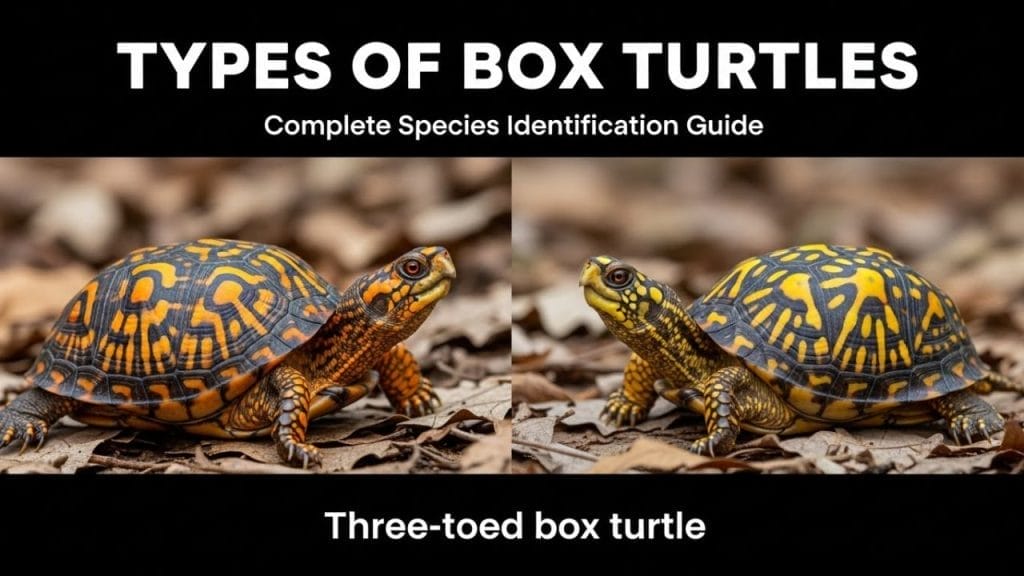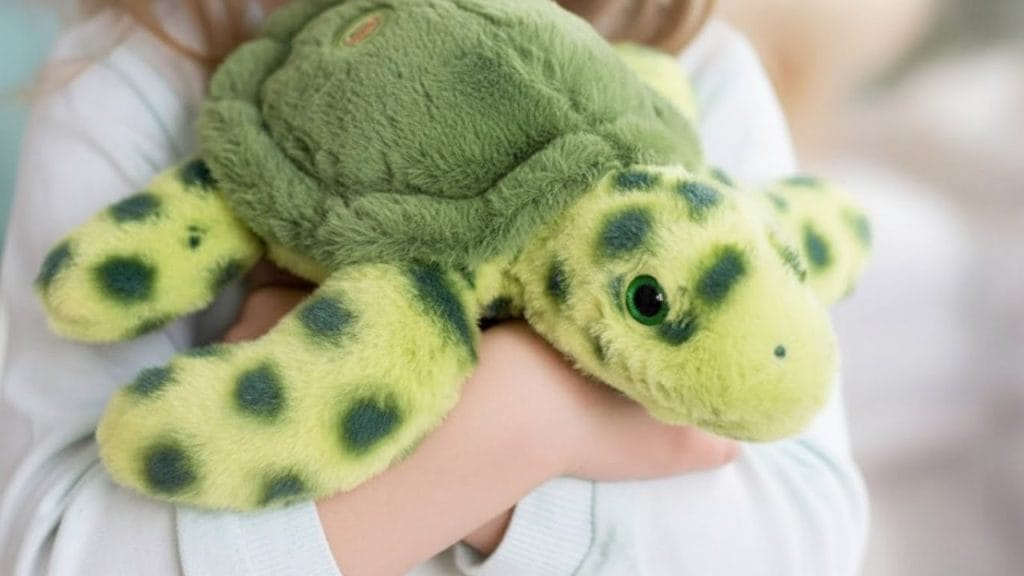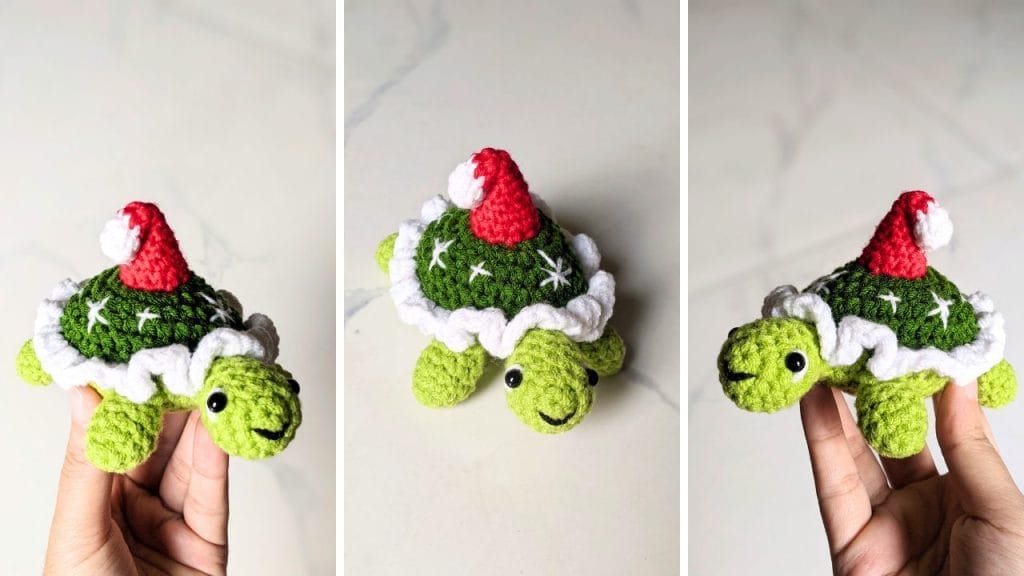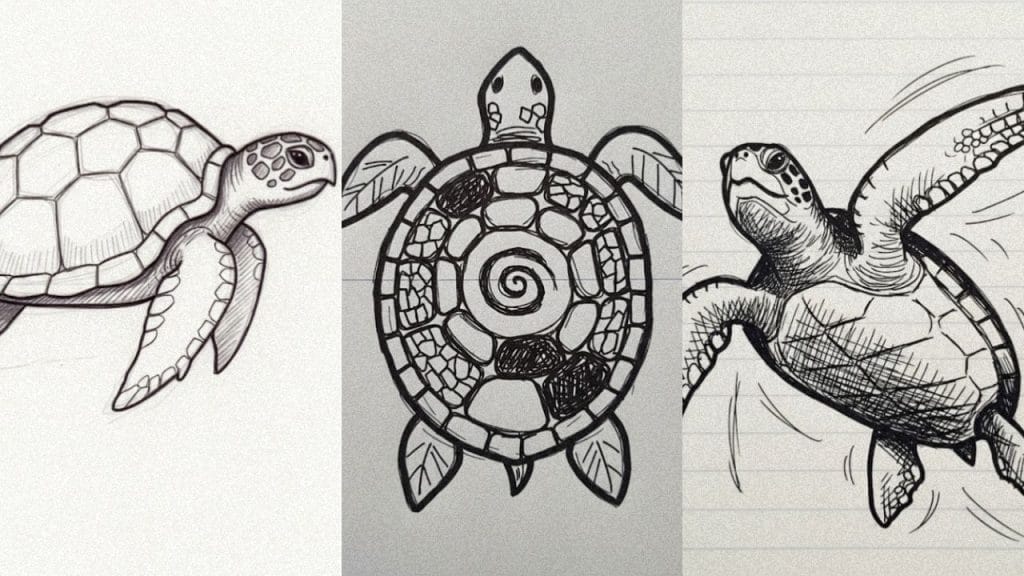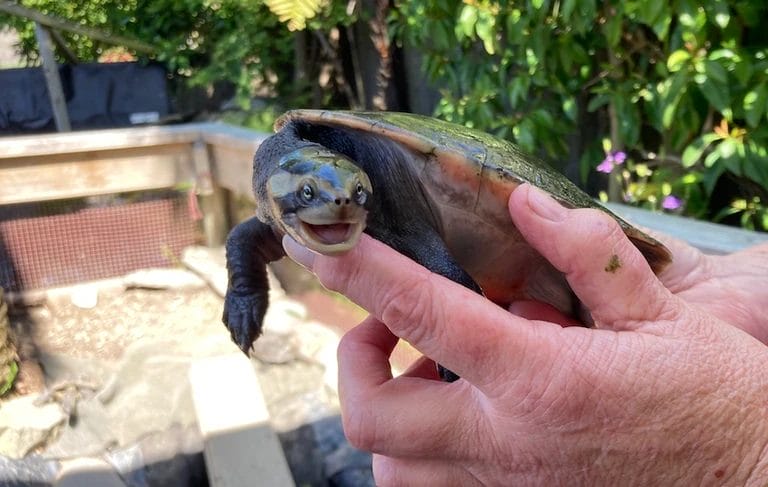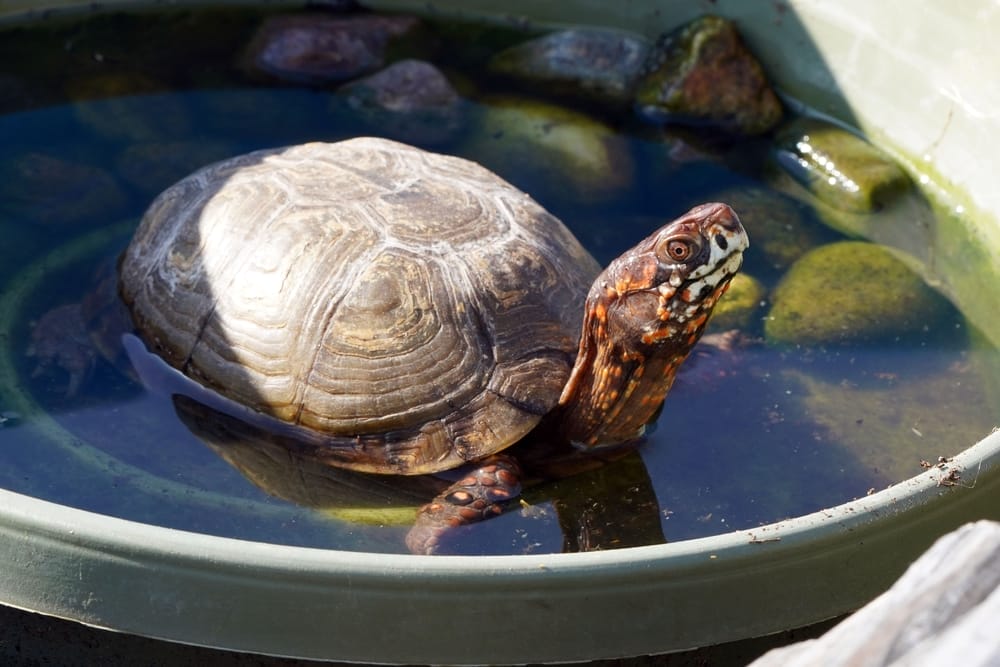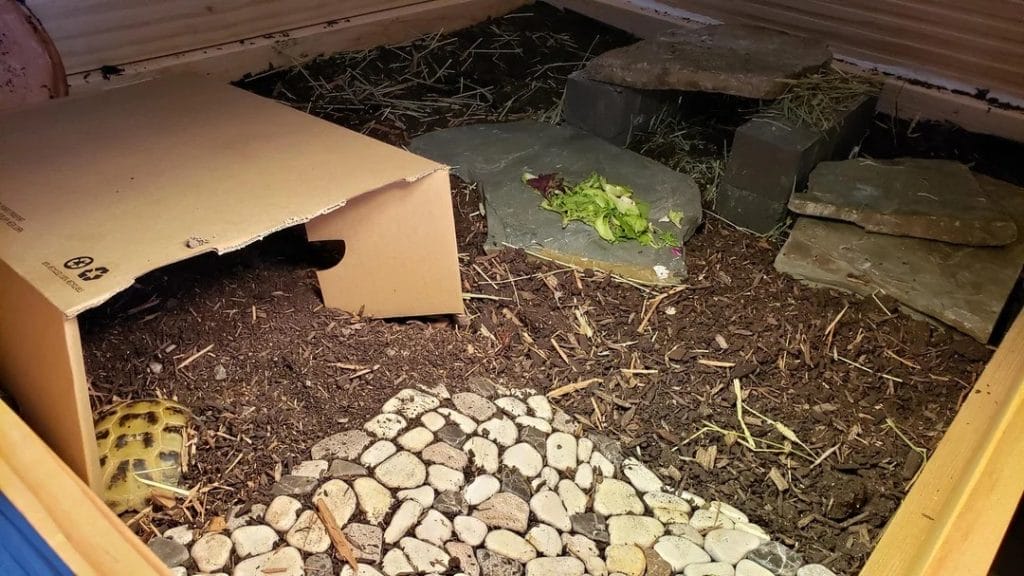10 Tortoise Breeds Every Beginner Will Love (and Can Actually Care For)

This post was created with help from AI tools and carefully reviewed by a human (Muntaseer Rahman). For more on how we use AI on this site, check out our Editorial Policy.
Starting out with a tortoise is an adventure unlike any other pet experience—less cuddles, more timeless charm.
But for beginners, choosing a tortoise breed can be a bit overwhelming.
How big will it get? What does it eat? How long will it live?
We’ve narrowed down 10 of the best tortoise breeds that are not only low-maintenance but are sure to win your heart with their slow-and-steady style.

10 Most Popular Pet Tortoise Breeds For Beginners
Getting a pet tortoise is exciting, but picking the right breed is key—especially for beginners!
Here’s a rundown of the most popular, beginner-friendly tortoise breeds and what makes each one a great option.
| Tortoise Breed | Size | Care Requirements | Diet | Fun Fact |
|---|---|---|---|---|
| Russian Tortoise | 5 to 10 inches | Needs space to roam. Tough and adaptable. Loves outdoor time. Needs a warm, dry habitat. | Herbivore. Enjoys leafy greens, hay, and flowers. | My Russian tortoise always finds a way to escape the enclosure for a quick backyard stroll! |
| Hermann’s Tortoise | 6 to 8 inches | Small and manageable. Enjoys outdoor setups. Friendly and social. Needs UV light exposure for a strong shell. | Herbivore. Prefers greens like dandelions and collard greens. | They love the sun and can sit under it for hours! |
| Greek Tortoise | 8 to 12 inches | Needs moderate space. Hardy and adaptable. Prefers dry and warm spaces. | Herbivore. Loves leafy greens, fruits in moderation, and fibrous plants. | These tortoises are stunning with shells that look like art! |
| Egyptian Tortoise | 4 to 6 inches | Tiny but with specific needs. Needs low humidity and plenty of warmth. Indoor enclosures are often best. | Herbivore. Mostly leafy greens, with low-protein veggies. | So small, they can almost fit in the palm of your hand! |
| Western Hermann’s Tortoise | 6 to 8 inches | Similar to Hermann’s. Loves the outdoors. Thrives in warm environments with lots of UV. | Herbivore. Enjoys mixed greens, grasses, and a bit of fruit. | The shell pattern on these guys is mesmerizing! |
| Golden Greek Tortoise | 8 to 10 inches | Warm and dry habitat preferred. Loves space. Great for a big, outdoor enclosure in warm climates. | Herbivore. Requires fibrous greens and flowers, with minimal fruit. | Their golden color really stands out in the garden! |
| Red-Footed Tortoise | 10 to 18 inches | Humid environment needed. Needs a larger enclosure due to size. Enjoys some hiding spots and lots of humidity. | Omnivore. Eats greens, fruit, and occasional protein like worms. | They love variety in their meals! I once caught mine trying to eat a bright flower petal. |
| Cherry-Headed Tortoise | 10 to 14 inches | Similar to Red-Footed. Needs warmth and humidity. Larger enclosure recommended with plenty of hiding spots. | Omnivore. Mixed greens, fruits, and some protein treats. | Their red heads are like little cherry tomatoes—so cute! |
| Leopard Tortoise | 10 to 18 inches | Warm and dry habitat needed. Prefers outdoor space if warm enough. Doesn’t burrow but needs room to explore. | Herbivore. High-fiber diet of grasses, leafy greens, and flowers. | Leopard tortoises have stunning, spotted shells and are gentle yet shy companions. |
| Indian Star Tortoise | 6 to 12 inches | Warm, humid climate needed. Sensitive to cold, so indoors is often best unless in a warm area. Needs a steady, consistent temperature. | Herbivore. Likes greens, grass, and minimal fruit. | That shell is a true showstopper! Looks like a star, and they act like one too—great conversation starters! |

1. Russian Tortoise
The Russian Tortoise, also called Testudo horsfieldii, is a hardy and low-maintenance species, making it a top pick for beginners. Growing between 5 and 10 inches, they’re small enough for manageable enclosures but need room to roam.
Russian tortoises love outdoor time when it’s warm, as they benefit from natural sunlight and exercise. Their habitat should be warm and dry, with plenty of UVB light if kept indoors.
These tortoises enjoy a simple diet of leafy greens, hay, and flowers, with favorites like dandelions and clover. My Russian tortoise always surprises me with his curiosity—he’s known to climb over rocks or dig around, always exploring!

2. Hermann’s Tortoise
The Hermann’s Tortoise (Testudo hermanni) is another great beginner choice, typically reaching 6 to 8 inches. They’re very sociable and friendly, which makes them fun to keep.
Hermann’s tortoises thrive in outdoor enclosures, as long as they have warmth and protection, but do well indoors too, provided they get daily UVB exposure.
Their diet includes leafy greens, grasses, and the occasional treat like flowers. They have a unique shell pattern with bright yellow and brown, adding a pop of color to any habitat.
Mine loves to bask in the sun, stretching his legs to soak up every ray—watching him enjoy the sun is so relaxing!

This Hilarious Turtle Book Might Know Your Pet Better Than You Do
Let’s be real—most turtle care guides feel like reading a textbook written by a sleep-deprived zookeeper.
This one’s not that.
Told from the snarky point of view of a grumpy, judgmental turtle, 21 Turtle Truths You’ll Never Read in a Care Guide is packed with sarcasm, sass, and surprisingly useful insights.
And hey—you don’t have to commit to the whole thing just yet.
Grab 2 free truths from the ebook and get a taste of what your turtle really thinks about your setup, your food choices, and that weird plastic palm tree.
It’s funny, it’s honest, and if you’ve ever owned a turtle who glares at you like you’re the problem—you’ll feel seen.
3. Greek Tortoise
The Greek Tortoise, or Testudo graeca, is known for its beautiful shell pattern and moderate size, reaching 8 to 12 inches. They’re very adaptable and can live in various environments, though they prefer warm, dry setups with ample space.
Greek tortoises are slightly larger than some other beginner species, so they need a bigger enclosure, but their striking shells are worth it! They’re herbivores, with a diet rich in leafy greens, fibrous plants, and occasional fruit.
My Greek tortoise has a real appetite for collard greens and will come right up to me when it’s feeding time.

4. Egyptian Tortoise
The Egyptian Tortoise (Testudo kleinmanni) is a tiny and unique species, growing only 4 to 6 inches long. They’re less common but loved by beginners who prefer small, manageable pets.
Egyptian tortoises need a warm, low-humidity environment, so they’re often best kept indoors unless you live in an ideal climate. Their diet is simple and mostly consists of leafy greens and low-protein veggies.
Despite their size, they’re full of personality, and mine can often be found exploring every nook of his habitat. Their tiny size makes them particularly endearing!

5. Western Hermann’s Tortoise
A subspecies of the Hermann’s tortoise, the Western Hermann’s Tortoise (Testudo hermanni boettgeri) is slightly different in shell pattern but similar in size, growing to about 6 to 8 inches.
They’re friendly and easygoing, enjoying outdoor time in warmer climates and UV light exposure. These tortoises eat mixed greens, grasses, and the occasional fruit treat. Their beautifully patterned shells add character to any enclosure.
My Western Hermann’s is always busy—she loves digging little burrows and hiding under leaves.

6. Golden Greek Tortoise
The Golden Greek Tortoise is a stunning variant of the Greek Tortoise, reaching about 8 to 10 inches. Known for their golden-hued shells, they add color to any habitat.
They prefer warm, dry environments and are perfect for outdoor enclosures in warm climates. These tortoises love fibrous greens and flowers and will eat fruit sparingly.
The golden hue of my Golden Greek’s shell always catches my eye—he practically glows in the sun!

7. Red-Footed Tortoise
The Red-Footed Tortoise (Chelonoidis carbonarius) is a friendly, larger breed, growing between 10 and 18 inches.
They have colorful markings, especially red on their legs and head, and enjoy a more humid environment with a larger enclosure to accommodate their size. Red-footed tortoises are omnivores, enjoying greens, fruits, and occasional protein like worms.
Mine is a picky eater with a big personality, always choosing the brightest-colored food items first—it’s like he’s making a meal masterpiece!

8. Cherry-Headed Tortoise
The Cherry-Headed Tortoise, a variant of the Red-Footed, grows to around 10 to 14 inches and has vibrant red head markings that make it easily recognizable.
They thrive in similar conditions to the Red-Footed, needing a warm, humid environment with lots of space.
Their diet is varied, with greens, fruits, and occasional protein. I love the splash of red on their heads; it’s so distinctive, and they really stand out in any setup!

9. Leopard Tortoise
The Leopard Tortoise (Stigmochelys pardalis), named for its beautiful, spotted shell, grows between 10 and 18 inches. They’re gentle and curious, though sometimes a bit shy.
Leopard tortoises thrive in warm, dry habitats and do well outdoors if it’s warm, but they can live indoors with proper lighting. Their diet includes high-fiber foods like grasses, leafy greens, and flowers.
Mine always perks up when she sees food coming—she’s a real character!

10. Indian Star Tortoise
The Indian Star Tortoise (Geochelone elegans) is known for its striking star-patterned shell, reaching 6 to 12 inches.
They’re sensitive to cold, so they need a warm, humid setup, and indoor enclosures are best in cooler climates. They’re herbivores, eating mostly greens, grasses, and occasional fruits.
Their beautiful shell pattern is always a conversation starter; my Indian Star is a little celebrity with that star-studded look!
Warning: You Might Spend Hours Here
I’ve built the ultimate turtle and tortoise species database. This isn’t your average turtle list. Filter by genus, conservation status, and more. How many species? Which are endangered? What’s the tiniest one? It’s all there.
Things to Consider Before Buying Your First Tortoise
Getting a tortoise is exciting, but they come with specific needs and a long-term commitment. Here are some essential points to consider before bringing one home.
1. Lifespan
Tortoises can live anywhere from 30 to over 100 years depending on the species. This means you’re likely signing up for a lifelong pet. Be sure you’re ready for the long haul, as they may even outlive you!
2. Space Requirements
Tortoises need plenty of space, whether indoors or outdoors. Small species like Russian tortoises can manage in moderately-sized enclosures, but larger ones need significant space to roam and explore.
Make sure you can provide a large enough area with proper security to prevent escapes.
3. Habitat Needs
Each tortoise species has specific temperature, humidity, and lighting requirements. Many need UVB light for shell health, and some need higher humidity.
Outdoor setups work well for some species, but be prepared to invest in the right equipment if you’re keeping them indoors.
4. Diet
Tortoises are mostly herbivores, but some species require a varied diet with occasional protein. A steady supply of leafy greens, grasses, and some fruits or flowers is essential. Be ready to spend a bit on fresh produce and possibly supplements to keep your tortoise healthy.
5. Initial and Long-Term Costs
Tortoises need proper enclosures, lighting, heating, and veterinary care, which can be pricey. The setup costs alone can be significant, and ongoing expenses for food, replacement bulbs, and health checkups add up over time.
6. Handling and Interaction
Tortoises are not cuddly pets, and many don’t enjoy frequent handling. While they can be friendly and interactive, they’re best suited for people who enjoy observing rather than holding. If you’re looking for a hands-on pet, a tortoise might not be the best fit.
7. Health and Vet Care
Tortoises can be prone to certain health issues like respiratory infections, shell rot, and metabolic bone disease. Finding a vet who specializes in reptiles is important and may require travel or higher costs than regular pet care.
8. Local Laws and Permits
Some tortoise species are protected by law or require permits, especially in certain countries or states. Make sure to research any legal requirements for owning the species you want.
Taking the time to understand these factors will help ensure that you and your tortoise have a happy, healthy, and well-prepared start together.

About Author
Muntaseer Rahman started keeping pet turtles back in 2013. He also owns the largest Turtle & Tortoise Facebook community in Bangladesh. These days he is mostly active on Facebook.


